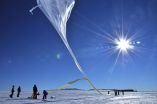(Press-News.org) A new study by researchers at University of California, San Diego School of Medicine reveals a protein's critical - and previously unknown -- role in the development and progression of acute myeloid leukemia (AML), a fast-growing and extremely difficult-to-treat blood cancer.
The finding offers a novel target for better treating AML, and possibly other cancers, by cutting off the ability of tumors to access nearby cellular players that feed its growth. The study was published July 23 in Cell Stem Cell.
"The work really focuses on trying to understand the dependence of cancer cells on the microenvironment that surrounds them," said senior author Tannishtha Reya, PhD, a professor in the Department of Pharmacology. The microenvironment refers to the normal cells, molecules and blood vessels around the cancer that may support and fuel its expansion.
In the study, the researchers showed that tetraspanin3 (Tspan3), a cell surface molecule, serves as a key link for cancer cells to interact with supportive parts of the microenvironment that help them replicate and flourish. "We found that blocking this molecule leads to a very profound inhibition of leukemia growth," said Reya.
The researchers demonstrated their results in both AML mouse models and patient cancer samples.
Reya said these findings are particularly important because AML is a cancer that often doesn't respond to current therapies. In addition, Tspan3 is a surface molecule, making it of greater translational interest as a target for antibody-mediated therapy. "There's been great progress in pediatric leukemia research and treatment over the last few years," said Reya. "But unfortunately, children with acute myeloid leukemia are often poor responders to current treatments. So identifying new approaches to target this disease remains critically important."
AML affects a group of white blood cells called myeloid cells, which normally develop into the various types of mature blood cells, such as red blood cells, white blood cells and platelets. It is a less common, but very aggressive form of leukemia that will produce an estimated 20,830 new cases in 2015 and kill 10,460 Americans, according to the National Cancer Institute.
The latest findings build on earlier work by Reya and colleagues, which identified Musashi (Msi) as a critical stem cell signal that is hijacked in several blood cancers. "We had this idea that analysis of the molecular programs controlled by Musashi may identify new genes important for these leukemias," she said.
The researchers conducted a genome-wide expression analysis of Msi-deficient cancer stem cells from two kinds of aggressive leukemia, blast crisis chronic myelogenous leukemia (bcCML) and AML. "We identified genes commonly regulated by Msi in both leukemias," said Reya, who is also a member of the Sanford Consortium for Regenerative Medicine and Moores Cancer Center at UC San Diego Health.
Unexpectedly, the analysis identified Tspan3 as one of the core genes controlled by Msi in leukemia. The protein is part of a large family of membrane proteins active in diverse cellular processes, including cell adhesion, proliferation and hematopoietic stem cell function and blood formation. "We are particularly excited about this work because, to our knowledge, this is the first demonstration of a requirement for Tspan3 in any primary cancer," said Reya.
To explore the connection further, the researchers took a "leap of faith" and generated the scientific community's first Tspan3 'knockout' mouse, bred to be deficient in Tspan3. In testing, the researchers found that Tspan3 deletion impaired leukemia stem cell self-renewal and disease propagation and markedly improved survival in animal models of AML. In patient samples, Tspan3 inhibition blocked growth of AML, suggesting Tspan3 is also important in human disease.
INFORMATION:
Co-authors include: Hyog Young Kwon, UCSD and Soonchunhyang University, South Korea; Jeevisha Bajaj, Takahiro Ito, Allen Blevins, Takaaki Konuma, Joi Weeks, Nikki Lytle and Claire Koechlein, UCSD and the Sanford Consortium for Regenerative Medicine; Roman Sasik, UCSD; David Rizzieri, Duke University, Durham, NC; Charles Chuah, Duke-NUS Graduate Medical School, Singapore; Vivian Oehler, Fred Hutchinson Cancer Research Center, Seattle, WA; Gary Hardiman, UCSD and San Diego State University.
The research was funded, in part, by a Lymphoma and Leukemia Society Scholar Award, the UC San Diego Moores Cancer Center NCI Core Grant (P30CA23100) and NIH grants (HL097767, DP1CA174422, DK099335 and CA186043).
Alexandria, VA - EARTH Magazine takes you to Le Mans, France, to cover how the World Endurance Competition (WEC) race series is transforming automotive efficiency in both high-performance racing and the commercial automotive industries. EARTH's latest feature explores the science behind efficiency upgrades used by three major racing competitors: Porsche, Audi and Toyota.
Using physics and cutting-edge materials results in a "fascinating case study of how unbridled competition can produce unique, innovative and extraordinary solutions to engineering barriers once thought ...
CHAPEL HILL, NC (July 23, 2015) - For years, a crisis has been brewing in molecular biology. The problem is that antibodies--research tools used to identify key proteins at work in a cell--aren't always what they seem. Unreliable antibodies have led to numerous instances of false findings, failed experiments, and wasted money and samples.
Enter the Histone Antibody Specificity Database, a newly launched online portal that lets scientists find the right antibodies for their research with a much higher degree of confidence than ever before. Rather than relying on the claims ...
It's well known that being socially connected promotes a person's overall and psychological health. A new study from the University of Rochester now shows that the quantity of social interactions a person has at 20--and the quality of social relationships that person has at age 30--can benefit her well-being later in life.
People with poor social connections have been shown to be at an increased risk for early mortality. "In fact," said lead author Cheryl Carmichael, who conducted the research as a PhD candidate in psychology at the University of Rochester, "having ...
Astronomers using the Karl G. Jansky Very Large Array (VLA) have discovered jets of material ejected by still-forming young brown dwarfs. The discovery is the first direct evidence that brown dwarfs, intermediate in mass between stars and planets, are produced by a scaled-down version of the same process that produces stars.
The astronomers studied a sample of still-forming brown dwarfs in a star-forming region some 450 light-years from Earth in the constellation Taurus, and found that four of them have the type of jets emitted by more-massive stars during their formation. ...
Chemotherapy for patients with end-stage cancer was associated with worse quality of life near death for patients with a good ability to still perform many life functions, according to an article published online by JAMA Oncology.
Physicians have voiced concerns about the benefits of chemotherapy for patients with cancer who are nearing death. An American Society of Clinical Oncology (ASCO) expert panel has called chemotherapy use among patients for whom there was no evidence of clinical value the most widespread, wasteful and unnecessary practice in oncology.
Holly ...
PHILADELPHIA - Physicians in training are twice as likely to order a costly brand-name statin (used to lower blood cholesterol levels) when supervised by senior physicians who prefer those medications in their own practice, according to a new study led by researchers at the Perelman School of Medicine at the University of Pennsylvania and published online in the Journal of General Internal Medicine. These findings document a link between low-value prescribing and graduate medical training, which physicians undergo after completing medical school but before they can practice ...
If oxygen was a driver of the early evolution of animals, only a slight bump in oxygen levels facilitated it, according to a multi-institutional research team that includes a Virginia Tech geoscientist.
The discovery, published Wednesday in the journal Nature, calls into question the long held theory that a dramatic change in oxygen levels might have been responsible for the appearance of complicated life forms like whales, sharks, and squids evolving from less complicated life forms, such as microorganisms, algae, and sponges.
The researchers discovered oxygen levels ...
JACKSONVILLE, Fla. -- In their bid to find the best combination of therapies to treat anaplastic thyroid cancer (ATC), researchers on Mayo Clinic's Florida campus demonstrated that all histone deacetylase (HDAC) inhibitors are not created equal.
In testing multiple HDAC inhibitors in combination with the chemotherapy drug paclitaxel, known to give some benefit for this aggressive cancer, they found that class II HDAC inhibitors signal through a newly discovered pathway to promote synergy with chemotherapy treatment.
They say their study, published online today in Endocrine ...
WASHINGTON, July 23, 2015 -- Have you ever wished you could hide under an invisibility cloak like Harry Potter or conceal your car with a Klingon cloaking device like in Star Trek? In a special Thursday bonus episode of Reactions, we celebrate the International Year of Light by exploring the science behind light, sight and invisibility. Though we can't make ourselves invisible yet, some promising research may light the way - or rather, bend the light away. Check it out here: https://youtu.be/sN70Bgm_PAQ.
This episode of Reactions was produced in collaboration with the ...
HANOVER, N.H. - Potentially destructive high-energy electrons streak into Earth's atmosphere from space, not as Shakespeare's "gentle rain from heaven," but at velocities approaching the speed of light.
This particle onslaught can lead to ozone depletion and damage to the orbital satellites that provide us with the navigation, communication, weather, and military-recognizance information upon which we have become increasingly dependent. These satellites fly through the Van Allen radiation belts -- giant concentric layers of charged particles held in place by the Earth's ...


